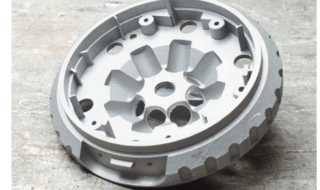Mechanical arms are built to perform an array of jobs, and as such, they are cutting edge, and some are very affordable. An assembling setting can’t work with a solitary robot; the business ought to purchase several robots to play out the various tasks.
A few sectors of the economy that had precluded the importance of the CNC robot arm and decided to stick with manual operators have discovered it practically difficult to beat the competitors this way and have changed tact as a result.
This is because of quick profit from ventures by the apparatus, rapidity, and reliable quality in outcomes. Machines subsequently are the world movers of today; almost nothing can be performed precisely and successfully without these machines’ utilization.
Whether new or old, these apparatuses can be repurposed and salvaged in various mechanized tasks because of their flexibility and versatility. This survey will essentially look at the roles of these mechanical arms in a manufacturing environment.
Contents
The Roles of Robotic Arms in Manufacturing Include:

Mechanized arms are utilized in different enterprises, in particular, food handling, automotive production tasks. These robots can be applied in numerous regions like material handling, welding, processing, and painting.
Welding
Mechanical welding can be characterized as using motorized programmable apparatuses that completely automate a welding cycle by taking care of the part and finishing the weld.
Automated welding is a moderately new pattern in mechanical technology. Mechanical welding was first utilized for spot welding in the car business.
Mechanical welding is on the ascent. The most famous automated welding types are spot welding, arc welding, laser welding, and resistance welding. The fundamental element of mechanical welds is quality and decrease of errors.
Material Handling
Material handling machines have the ability to mechanize the most risky, complicated, and drawn-out assignments in a production line. In this line, material handling machines improve the line’s thruput and provide quality merchandise on time that ensures user loyalty.
Material handling envelops an assortment of assignments on the working territories like packing, moving, and machine loading, among others. When choosing machine handling robots, it is vital to think about payload, speed, and end-of-arm tooling, all as necessities.
Palletizing
Industry palletizing is the activity of stacking or dumping pieces, boxes, or different parts from pallets. This activity can include robots and is termed mechanical palletizing.
Palletizing robots are dependable choices for different businesses like transportation, assembling, and food preparation, among others. Mechanical palletizers are accessible in a broad range with unmistakable reach and payloads.
End-of-arm tooling changeability allows for adaptability of particular kinds of automated palletizing. They incorporate sack grippers with a unit and backing it at the base, while suction and magnetic grippers dealt with more furrowed units and held them from the pinnacle. Palletizing also improves the consistency of loading and unloading tasks.
Assembly Line
Assembly line arms are used for modern lean techniques and have broadened creation capacities in the assembling climate. These robots unburden the labour force from exhausting and dull tasks and they are additionally ready to advance consistency and speed.
End-of-arm tooling can be customized for each appliance to serve to produce necessities. Additional choices, for instance, automated vision, can be consolidated to upgrade the exactness and effectiveness of arranging identifiers.
Milling
Automated processing is the technique of chipping away parts from a shape or a model to frame a convincing design. Processing robots can perform exact cuts and have definite developments required to create the most outstanding quality parts feasible.
An object of any measurement can be processed yet needs changes in end-of-arm tooling and programming too. Automated processing work cells are made to contain numerous part installations, empowering them to get more parts and boost production.
Final Thought
All in all, most of these robotic arms are composed of a broad range of features, as we have illustrated above. Most of these machines can be reprogrammed, reused, and reconditioned to save on capital outlays.



